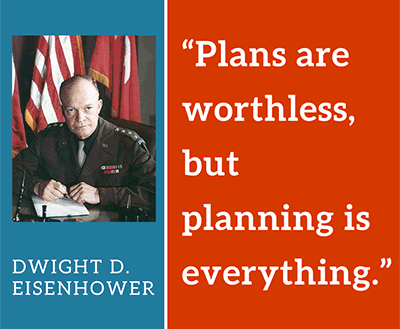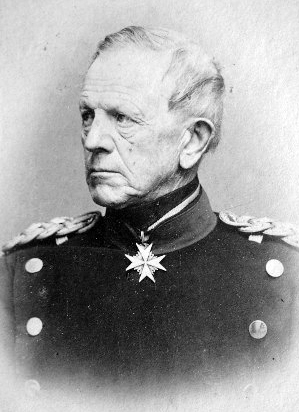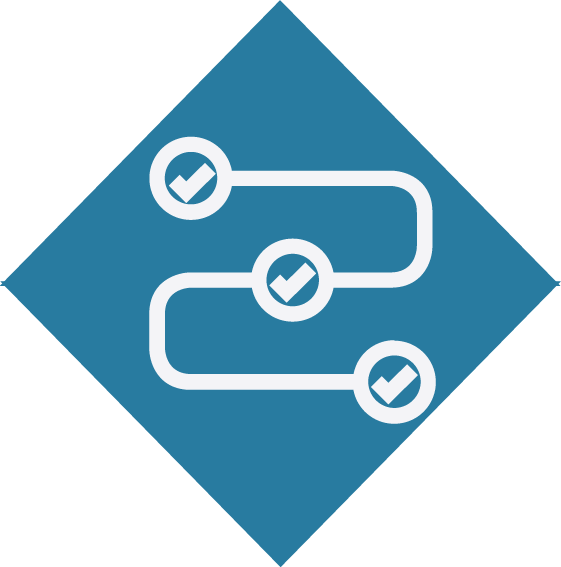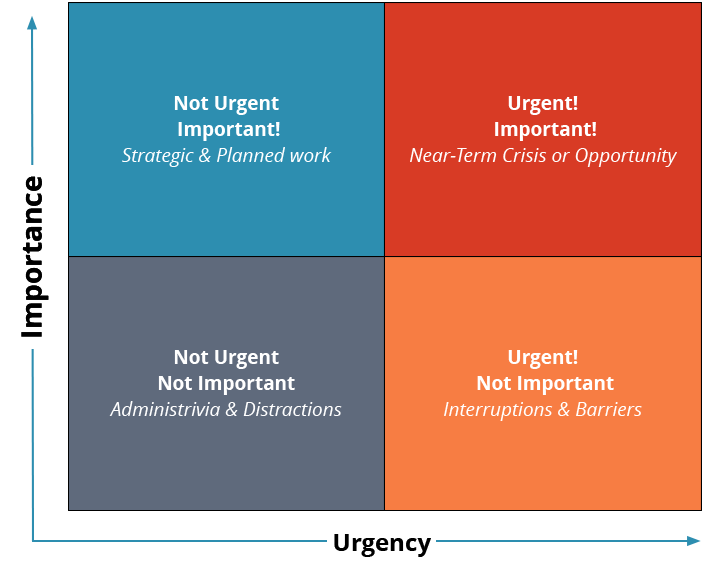How to Run Better Planning Meetings
I enjoy planning meetings. I also enjoy large, easy jigsaw puzzles.

When you know the basic shape you’re going for, and you have a bunch of the pieces handy, it can be quite satisfying to get them to all fit together into a nice, coherent picture. With a jigsaw puzzle, it’s very clear that the value is in the activity itself. People who puzzle do so because they enjoy spending their time figuring it out—not because they’re genuinely curious about what the end picture might be.
Like the picture you see when you finish a jigsaw puzzle, most of the plans you get at the end of a planning meeting aren’t really meant to last.

The details of most plans prove incorrect once the work begins. Dwight Eisenhower understood this, leading him to use the quote above about plans being worthless in multiple interviews. But he also understood that the planning process forced teams to dive into the details, explore their options, and consider alternatives. The knowledge gained during this process is what made it possible for them to quickly adapt as the work unfolded.
That’s useful, because:

No battle plan survives first contact with the enemy.
Helmuth von Moltke the Elder, Chief of Staff of the Prussian army before World War I
Moltke is widely recognized as a brilliant military expert and strategist. This rough translation of Moltke’s thesis came from hard lessons learned. As warfare in the 1880s rapidly evolved in response to inventions such as the machine gun, he found it was no longer possible to sit back and plan out a full battle. He could plan the opening moves, and after that, he’d need a “system of expedients”—meaning good alternatives—that his commanders could choose from as the battle progressed.
One hundred and thirty years later, Steve Blank, a guru of Lean startups and entrepreneurship, rephrased Moltke’s quote like so:
No (business) plan survives first contact with customers.
Steve Blank
So – plans are worthless, and this month we’re kicking off a new program for team leaders where we help them develop a plan for their meetings. After 3 focused sessions, they’ll leave with a plan they can bring to their team laying out:
- Which meetings they should run and how to run them
- How often they should meet
- How they’ll manage all the ways God likes to laugh at plans like this
If all the quotable gents above are correct and plans are useless, how can this be a good idea?
This is a wonderfully useful program because planning is everything.
The value of planning comes from the conversations you have with your team. In a great planning meeting, you’ll build enthusiasm, create alignment, and make decisions that enable action. Without the planning discussion, coordinated action is not possible.
Team leaders who complete our program will take their draft plan back to their team. They’ll share what they learned, what they suggest, and the challenges they see. Then, the whole team will run a planning meeting to decide on exactly what they’ll do. As they learn what works, they’ll regularly update their plan going forward.
Static plans are worthless. Living plans are everything.
My version!
Today I want to dig into why this is a super-smart approach to useful planning, regardless of the type of plan you’re making.
Contents
Let’s start with definitions. When I say “Planning Meeting,” this is what I mean.
Definition: What is a Planning Meeting?

- A Plan:
- A proposed series of actions for achieving something.
- A Planning Meeting:
- A meeting that teams use to create a plan and secure commitment to taking the first steps.
The purpose of a planning meeting is to create plans AND secure the group’s commitment to implementing the plans.
During a planning meeting, the team seeks to answer these questions:
- Given our strategy, goals, and what we know now, what’s our plan?
- Who will be responsible for what by when?
When the planning meeting ends, teams should have these results.
Work Outcomes
- A documented rough plan that can be quickly formalized after the meeting.
- Clarity about who will do what by when.
- Visibility into dependencies, missing resources, and known problems to solve.
- Awareness of the known unknowns; those areas in need of further investigation.
Human Outcomes
- Understanding of the plan’s scope.
- Clarity about how one’s work will be coordinated with others.
- New knowledge about the possible ways to approach this work.
Examples
- Quarterly Planning (Rocks or OKRs, anyone?)
- Project Planning
- Campaign Planning (Marketing)
- Product Roadmap Planning
- Sprint Planning
- Event Planning
- Work Planning…
You get the idea. 🙂
What about Strategic Planning? Not so much. When done well, strategic planning is a process composed of many activities, including several meetings. Only a few of these are really about making plans – and there’s a good case to be made for keeping your strategy and your planning meetings separate.
How to Spot a Worthless Waste of Time (WWoT):
Common Approaches That Yield Terrible Plans
The most common mistakes occur when a leader schedules a “planning meeting,” but actually runs a different type of meeting instead. Despite what this recent McKinsey article might lead you to believe, there are more than three types of team communication, and knowing the differences between them matters.
WWoT 1: The Fait Accompli
The Plan is Done. Now you dummies get to work!
What this looks like:
The Plan Master walks into the meeting with a PPT deck and presents the plan. They tell people their tasks, deadlines, tracking systems, and how it will all come together beautifully because they’ve outlined the critical path dependencies in purple. They leave the last 5 minutes for questions.
Why this Fails:
This isn’t a planning meeting. This is a broadcast.
Broadcasts are a form of information sharing. The Plan Master just delivered a boring webinar to a hostage audience. Maybe if everyone gets a few extra minutes for questions, you could consider this a training on how to understand the plan – but there’s certainly no room here for a meaningful planning discussion.
Note: There are times when a plan is done and you do need to tell people about it. This happens a lot during All-Hands meetings. That’s fine – just don’t call that a planning meeting.
WWoT 2: Blue Skying
Hey guys… what if we planned some stuff?
What this Looks like:
The Plan Master has a big, beautiful, fuzzy idea. A dream of what might be. Pontificus Maximus brings the team together for an hour, draws some boxes connected to other boxes via arrows, then asks: How can we make this happen? What’s your plan?
Why this Fails:
This isn’t a planning meeting. This is, at best, an idea generation meeting.
In these meetings, it takes the team some time to understand what those boxes might be. The concept is new, which makes it feel hypothetical. So, if there’s even time to talk about how that vision might become a reality, the team will throw out ideas about things they might hypothetically do.
The leader may walk out thinking they have a plan. They do not.
Really, those plans are more like this:
Hypothetically, I could spend 10 minutes every day learning to master pullups. That’s totally feasible. It could happen, and if it did, I’d be happy. I’d like to be able to do a great pull-up. But just because I like the idea and can envision a way to accomplish it, that does not mean I have committed to this plan. I have not.
WWoT 3: The Shotgun Wedding
Here’s a new idea. Now you’re committed!
What this Looks like:
The Plan Master has a clear idea and a plan for getting it done. They bring the team together and share their idea. Then, like in a real planning meeting, they ask the team for their input. But instead of listening, they nod, reframe or refute every suggestion, and because they want to “respect everyone’s time,” they cut the meeting short by telling everyone exactly what they’re going to do.
Why this Fails:
This approach is disrespectful, insincere, and dehumanizing. Want to destroy team morale and employee engagement? Ask your team for their ideas, then ignore them. The Plan Master may be surprised when nothing happens, or when their efforts are subtly sabotaged, but no one else will be.
Want your team to contribute their unique expertise to your plans and enthusiastically commit to carrying them out?
Then try this instead.
The Underlying Structure of an Effective Planning Meeting (and Top Tips!)
Every effective planning meeting will include these steps.
The Five Steps in an Effective Planning Meeting
- Greet your group and confirm the meeting’s purpose.
- Review the proposed plan.
- Refine the scope and quality of the plan.
- Fill in the details.
- Confirm the next steps and the communication plan.
Depending on the kind of plan you’re creating, it could take 30 minutes to run through these steps – or a full day! You’ll also change how you describe and lead each step to fit the situation.
Tip: To see step-by-step instructions for several different kinds of planning meetings, check out our downloadable meeting templates.
That said, here are some tips for each step that apply in most situations.
Step 1. Greet your group and confirm the meeting’s purpose.
This is pretty easy. Of all the meeting types, planning meetings may be the most straightforward. The purpose and desired outcome are fairly obvious to everyone involved, people usually understand how to prepare, and if you keep the meeting running on schedule, you’ll rarely hear complaints about wasting anyone’s time.
How do you keep planning meetings on schedule?
Key to Your Success: Only invite relevant people.
Who will be responsible for what by when? Anyone who isn’t directly involved in creating the plan will introduce tangents, multitask, slow the group down, and drain their energy. Keep the invite list as small as possible to prevent these problems. When you’re working on a large multi-part plan, this means you should break the meeting up so that participants only need to attend during the times when you’re discussing the bits that apply to them.
This makes it possible for you to say:
“We’re here today to create a plan for <achieving your amazing goal>. You are here because you are the exact right people to make sure we end up with a high-quality plan. This is exciting, because when our plan succeeds, we will <reap all kinds of awesome benefits>. You are key to making that happen.”
Want to draft your own compelling greeting? Use Leadership Strategies’ IEEI formula!
Step 2. Review the proposed plan.
If possible, share a draft plan with the group in advance. If that wasn’t possible, consider scheduling 5 to 20 minutes for everyone to read the plan silently during the meeting. This eliminates the “blank slate” problem, giving everyone something to build on.
Once everyone’s read the draft plan, invite them to ask Clarifying Questions about anything that isn’t clear.
Key to Your Success: Show up with the plan half done.
Planning meetings are for solidifying plans and filling in gaps, not for making up ideas about what you might do out of thin air. (See WWoT2: Blue Skying)
If you don’t know enough about the task ahead to get the plan half-formed before the meeting, then you aren’t ready for a planning meeting.
Want to see what sharing a half-plan looks like in practice? Pay attention the next time you see an action movie. Nearly every action movie includes at least one planning meeting where the ace team discusses their cunning plan. The team leader starts by outlining the scenario, the goal, the available resources, and the bones of a plan.

The leader draws triangles connected by arrows to other triangles with a stick.
“We need to get the treasure out of the fortress before nightfall,” she says. “We have a key to the front gate and a contact inside who can open the vault once we’re in. There’s a private jet waiting for us at the airport.
Now we just need to figure out how to get past the security…”
Notice: the goal is clear and they’re starting with a partial plan. Now, the rest of the crew can make the plan brilliant by sharing their expertise.
“I can take half a dozen men around the back wall to create a diversion,” the commando grunts.
“I’ll take out their communication system from here, so they can’t call for backup,” the tech geek chimes in.
“That still leaves the zombies!” the leader says, shaking her head. “How are we going to get around them?”
“Leave the zombies to me,” says the star.
And there you have a plan!
Planning meetings in action movies clearly illustrate these tips: elite squads never invite extra people to the planning meeting; and they always start the meeting with a clear objective, clear boundaries, and a rough plan in mind.
Of course, the plans in action movies never quite work. Perhaps they should have paid more attention to the next step!
Step 3. Refine the scope and quality of the plan.
Once everyone understands the plan, you can dramatically improve the plan’s quality if you take some time to challenge the plan’s scope and the group’s assumptions.
For most planning meetings, this means asking the group to discuss one or two questions like those in the examples below.
Discussion Questions for Improving a Plan
To challenge the plan’s scope, you might ask:
- When we complete this plan, what will we be celebrating? If we really care about celebrating that, is there an alternate way to get there?
- How might we achieve our goal (faster, more easily, with less expense)?
- Of all the things we need to complete, which parts might end up not being needed? Can we defer those until later?
Sometimes a group will make a plan that’s too conservative because they assume their plan has to work within the safe boundaries they’ve been limited to in the past. Questions like these can uncover ways to simplify the plan by challenging those assumptions.
- If we had double our current resources, what would we do? Can we do any of those things now?
- If we could secure one new resource that would greatly increase our chances of success, what would that be?
- If we could remove all the red-tape, bureaucracy, and annoying parts of this plan that aren’t directly contributing to our goal, what would that look like? Which of these annoyances are within our control? (Kaizen it!)
- If you had just been hired from outside the company – so you knew nothing about our situation – and your job was dependent on the success of this plan, what would you do differently?
While some groups limit their thinking too much, others are too confident. This makes tools like the pre-mortem one of the most powerful additions to your planning meeting. Reduce the risks associated with wishful thinking and overconfidence by asking these questions:
- When we’ve tried plans like this in the past, where did we run into problems?
- Let’s imagine we’re months in the future and this has gone so badly that we’re all out of a job. What happened?
- Given these possible ways we might fail, what can we change in our plan now to minimize those risks?
Questions like these can reveal all kinds of ways to improve your plan, so if it’s really important, it’s worth spending more time here.
That said, no plan survives contact with reality, and no amount of conversation will yield a perfect plan. I recommend setting a timer so this discussion doesn’t totally derail your meeting.
Step 4. Fill in the details.
Time for the horse-trading, getting down to brass tacks, and shuffling the cards in the deck. Or – prioritizing, resourcing, and scheduling.
Now, finally, it’s time to put the picture together. Exactly who will do what by when?
Someone needs to act on this plan, which probably means taking resources away from wherever they are now. Do you need to negotiate priorities, budget, or access to the team? Brush up on your negotiation skills!
If your team gets stuck, this is a great time to break out a prioritization matrix. Plot all the tasks on your plan in the matrix, and use it to agree on the handful of tasks you will start right away. Then, you can regroup to decide on the next set of tasks. (Agile iterations, anyone?)

Popular prioritizing criteria include:
- Effort vs Impact
- Feasibility vs Desirability
- Cost vs Value
- Risk vs Value
- Urgency vs Importance
At the end of this step, you’ll have a plan.
It doesn’t have to be pretty – someone can clean it up after the meeting. Don’t waste time on the editorial stuff. It’s time to move on to your final step.
Step 5. Confirm the next steps and the communication plan.
Are you an elite team of action heroes? Then you know to always confirm the rendezvous point and synchronize your watches.
For the rest of us, here’s a reminder.
I’m surprised by how many planning meetings end without anyone clarifying where this brilliant new plan can be found after the meeting. I’m surprised mostly because this is something I personally forget in the meetings I lead! As the person in charge, I already have an idea of where I’ll post the plan we just worked on, so I forget that not everyone in the room can read my mind.
Like most businesses, we have all kinds of communication tools and all kinds of ways to document our work. This makes it vital to explicitly state where each plan will be recorded, how we’ll share progress, and how we’ll keep it updated going forward (following our Action Reviews and Plan Refinement Meetings).
Reminder – Static Plans are Worthless, But Planning is Everything!
Maybe the 2022 version of the quote should be:
No return-to-the-office plan survives the next government mandate.
And really, we shouldn’t be too surprised.
Plans that involve more than five people working together over more than a few days require some midstream adjustment at best, and more commonly, regular and thorough rejiggering.
When we go into planning meetings, we often think that the plan is the point. I mean – OK – that’s what we’re creating and it’s the name of meeting itself, so obviously making a plan is part of the point. Yet, like so many others who have gone before us have discovered, the deeper value comes from all the learning your team does as they work on that plan. The plan itself may well end up proving worthless, but the learning is indispensable. Keep this in mind for your next planning meeting, and watch for opportunities to enhance that learning.
Speaking of which, registration is now open for team leaders who want to learn how to free their teams from unproductive meetings. Join us to create a great draft plan that your team will love to help you refine.



